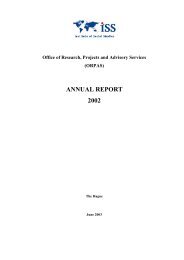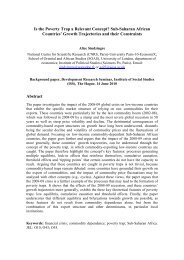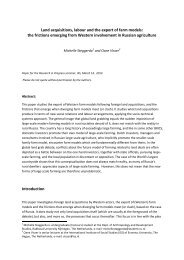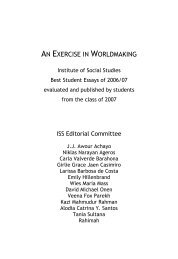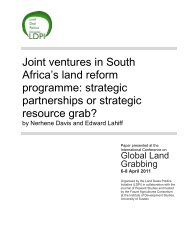AN EXERCISE IN WORLDMAKING 2009 - ISS
AN EXERCISE IN WORLDMAKING 2009 - ISS
AN EXERCISE IN WORLDMAKING 2009 - ISS
You also want an ePaper? Increase the reach of your titles
YUMPU automatically turns print PDFs into web optimized ePapers that Google loves.
166 UMME BUSRA FATEHA SULT<strong>AN</strong>A<br />
by Edward Said’s (1979) ‘orientalism’. Said’s employment of orientalism<br />
from the perspective of Foucault’s notion of ‘discourse’ reveals that the<br />
whole European scholarly work which intrinsically viewed Islam and<br />
Muslims as inferior and sub-human has created a discourse of the “Muslim<br />
Other” (Musallam, 1979: 25) to establish the “Western Self” as “civilized”<br />
and the unique possessor of hegemonic knowledge (de Sousa Santos<br />
et al., 2007: xxxv).This identity of superior culture at the same time<br />
gives the West the authority of symbolizing veil as the ultimate marker of<br />
Islam’s resistance to modernity (Scott, 2007 : 2), backwardness and Islam’s<br />
degradation of women (Butler, 2008: 13; Ruby, 2006 : 62). Thus,<br />
from a simple piece of cloth veil becomes the fixed icon of “oppressed<br />
Muslim culture”, which at the same time denies the numerous ways<br />
through which it has been practiced by Muslim women. Likewise,<br />
though Rozario (2006) explores several reasons behind Bangladeshi<br />
women’s adoption of burqa, she ultimately brings all burqa users under<br />
the same category and claims that such adoption is the result of an increasing<br />
Islamic movement and as a women’s rights activist she concludes<br />
“however empowering the burqa might seem to the women who<br />
take it up, in reality it contributes to the ongoing violation of women’s<br />
rights in Bangladesh” (Rozario, 2006: 378). Consequently, ideas like<br />
“women’s rights”, “emancipation” and “empowerment” are only limited<br />
to hegemonic Western perspectives, and remain ahistoric. Whatever<br />
“emancipatory” was the history of burqa in Bangladesh (Feldman and<br />
McCarthy, 1983: 953-54; Abu-Lughod, 2002: 785) has totally a reverse<br />
association with present notions of feminist thinking of burqa.<br />
The description of the worldviews of civilized versus backward, morally<br />
upright versus ideologically compromised, modernity versus traditionalism,<br />
inferiority versus superiority, fundamentalism versus secularism,<br />
oppression versus emancipation as ‘the dangers of dichotomization’<br />
by Scott (2007:19) is perfectly apt for these feminists who fail to see beyond<br />
the oppressive nature of veil. They leave no room for self criticism,<br />
no acceptance of the diversity of knowledge, no ability to see beyond the<br />
prisms of right versus wrong, tradition versus modernity and so on. Such<br />
dichotomizations are so pervasive sometimes women have to sacrifice<br />
their burqa to get attractive and challenging jobs. One of my friends had<br />
a keen desire to be a part of the women’s movement; however, she was<br />
perceived as a fundamentalist and conservative due to her burqa, and at<br />
last she had to replace her burqa with a high neck, long sleeves and a




